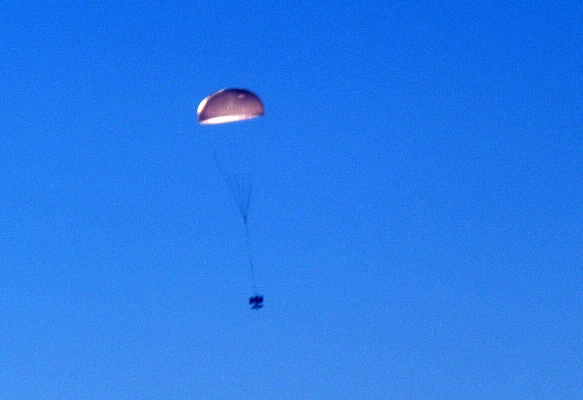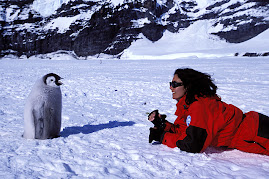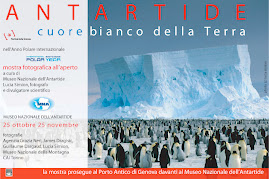A team of researchers from NASA, the U.S. Geological Survey (USGS), the National Science Foundation (NSF) and British Antarctic Survey (BAS) unveiled today (27 Nov 07) the most geographically accurate, true-color satellite photograph ever made of Antarctica.
More than a thousand scenes captured during seven years of satellite observations have created the visually stunning Landsat Image Mosaic of Antarctica (LIMA). The virtually cloudless satellite view of Antarctica's frozen landscape provides much greater detail for the entire continent than has been available before. For the first time researchers and the public can explore Antarctica for themselves in a completely new way.
"This mosaic of images opens up a window to the Antarctic that we just haven’t had before. It will open new doors of opportunity for scientific research as well as enable the public to become much more familiar with Antarctica and how scientists use imagery in their research," said Robert Bindschadler, chief scientist of the Hydrospheric and Biospheric Sciences Laboratory at NASA's Goddard Space Flight Center in Greenbelt, Md. "This innovation, compared to what we had available most recently, is like watching the most spectacular high-definition TV in living colour versus watching the picture on a small black-and-white television."
Advances in satellite technology since the 1970's have revolutionized scientific study of the Earth's greatest natural laboratory. For example, movement of glaciers, previously measured by ground-based measurements or aerial photography, is now much better understood as a result of upgraded instruments on each new Earth-observing satellite.
"LIMA is truly stunning to look at but above all it is a fantastic tool created from uniformly and rigorously processed data. This mosaic represents an important US-UK collaboration and is a major contribution to International Polar Year (IPY)," said Andrew Fleming, at BAS. "Over 60,000 scientists are involved in a global initiative to understand our world. I have no doubt that IPY researchers will find LIMA invaluable for planning science campaigns or for analyzing environmental changes to the continent."
For the first time too members of the public can view the mosaic through a web portal hosted by USGS. Web visitors can zoom in to see large ice masses along the coast, the mountainous peninsula or the inland dry valleys at varying levels of detail. Eight different versions of the full mosaic can be viewed and downloaded.
BAS Director Professor Nick Owens added, "If society and our political leaders are to make informed decisions and devise strategies to cope with global change they need the best scientific evidence they can get. I have no doubt that LIMA gives us an extraordinary tool for scientists to observe and collect the evidence we need."
The Landsat Image Mosaic of Antarctica is now available on the web at:
http://lima.usgs.gov/
For related images and information about LIMA and the interagency team on the web, visit:
http://www.nasa.gov/vision/earth/lookingatearth/lima_press_conf.html
For educational materials related to the new Antarctic mosaic on the web, visit:
http://lima.nasa.gov
ENDS
Notes for Editors: The mosaic is made up of about 1,100 images from Landsat 7, nearly all of which were captured between 1999 and 2001. The collage of images contains virtually no gaps in the landscape, other than a doughnut hole-shaped area at the South Pole because the orbital limits of landsat means that anywhere south of 83degrees cannot be imaged. LIMA shows virtually no seams between images. Each pixel's color represents the true reflectance of light off the surface, a quality useful to scientists.
British Antarctic Survey is a world leader in research into global issues in an Antarctic context. It is the UK’s national operator and is a component of the Natural Environment Research Council. It has an annual budget of around £40 million, runs nine scientific programmes and operates five research stations, two Royal Research Ships and five aircraft in and around Antarctica.
International Polar Year 2007–2008 is the largest coordinated international scientific effort for 50 years. From ice sheets and space science to Arctic communities and the creatures of the Southern Ocean, IPY includes more than 200 Arctic and Antarctic projects and harnesses the skills of 50,000 people – including scientists, students and support staff – from more than 60 nations.
IPY is sponsored by the International Council for Science (ICSU) and The World Meteorological Organization (WMO)
British Antarctic Survey Press Office
Linda Capper – tel: ++44 1223 221448, mob: 07714 233744, email: l.capper@bas.ac.uk
Athena Dinar – tel: ++44 1223 221414, mob:07740 822229, email: a.dinar@bas.ac.uk




















